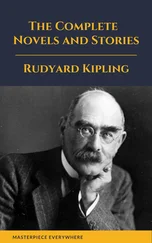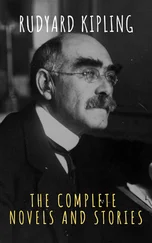One of the great ironies of Lou Reed’s life is that he would hardly have had a career if it weren’t for the outstanding writers who wrote glowingly about him in the face of his scorn. I have never understood why people in the rock world look upon biographies as attacks when they are the best free advertising a rock star could possibly get. All those people should thank the writers for taking the time to address their audiences intelligently, just as I am thanking every writer for everything I learned about Lou in his last truly great period. There is something deeply engaging in the Lou and Laurie story. Somebody should write a book about it.
When I think of Lou, I remember what a romantic he was. And fun. And then when he had you hooked with that sweetness, he had to destroy you in order to survive. He couldn’t help himself, like any predator. He always warned his prey, partly as a challenge and partly to cover his ass for any later moral responsibility. What made the process interesting was the fact that it was an ongoing intellectual and artistic work—a performance piece.
An acquaintance
Chapter One
ELECTROSHOCK: 1959–60
I don’t have a personality.
Lou Reed
Nineteen fifty-nine was a bad year for Lou, seventeen, who had been studying his bad-boy role ever since he’d worn a black armband to school when the No. 1 R&B singer Johnny Ace shot himself back in 1954. Now, five years later, the bad Lou grabbed the chance to drive everyone in his family crazy. Tyrannically presiding over their middle-class home, he slashed screeching chords on his electric guitar, practiced an effeminate way of walking, drew his sister aside in conspiratorial conferences, and threatened to throw the mother of all moodies if everyone didn’t pay complete attention to him.
That spring, Lou’s conservative parents, Sidney and Toby Reed, sent their son to a psychiatrist, requesting that he cure Lou of homosexual feelings and alarming mood swings. The doctor prescribed a then popular course of treatment recently undergone by, among many others, the British writer Malcolm Lowry and the famous American poet Delmore Schwartz. He explained that Lou would benefit from a series of visits to Creedmore State Psychiatric Hospital. There, he would be given an electroshock treatment three times a week for eight weeks. After that, he would need intensive postshock therapy for some time.
In 1959 you did not question your doctor. “His parents didn’t want to make him suffer,” explained a family friend. “They wanted him to be healthy. They were just trying to be parents, so they wanted him to behave.” The Reeds nervously accepted the diagnosis.
Creedmore State Psychiatric Hospital was located in a hideous stretch of Long Island wasteland. The large state-run facility was equipped to handle some six thousand patients. Its Building 60, a majestically spooky edifice that stood eighteen stories high and spanned some five hundred feet, loomed over the landscape like a monstrous pterodactyl. Hundreds of corridors led to padlocked wards, offices, and operating theaters, all painted a bland, spaced-out cream. Bars and wire mesh covered the windows inside and out. Among the creepiest of these cells was the Electra Shock Treatment Center.

Creedmore State Mental Hospital. (Victor Bockris)
Into this unit one early summer day walked the cocky, troubled Lou. He was escorted through a labyrinth of corridors, unaware, he later claimed, that his first psychiatric treatment session at the hospital would consist of volts of electricity pulsing through his brain. Each door he passed through would be unlocked by a guard, then locked again behind him. Finally he was locked into the electroshock unit and made to change into a scanty hospital robe. As he sat uncomfortably in the waiting room with a group of people who looked to him like vegetables, Lou caught his first glimpse of the operating room. A thick, milky white metal door studded with rivets swung open revealing an unconscious victim who looked dead. The body was wheeled out on a stretcher and into a recovery room by a stone-faced nurse. Lou suddenly found himself next in line for shock treatment.
He was wheeled into the small, bare operating room, furnished with a table next to a hunk of metal from which two thick wires dangled. He was strapped onto the table. Lou stared at the overhead fluorescent light bars as the sedative started to take effect. The nurse applied a salve to his temples and stuck a clamp into his mouth so that he would not swallow his tongue. Seconds later, conductors at the end of the thick wires were attached to his head. The last thing that filled his vision before he lapsed into unconsciousness was a blinding white light.
In the 1950s, the voltage administered to each patient was not adjusted, as it is today, for size or mental condition. Everybody got the same dose. Thus, the vulnerable seventeen-year-old received the same degree of electricity as would have been given to a heavyweight axe murderer. The current searing through Lou’s body altered the firing pattern of his central nervous system, producing a minor seizure, which, although horrid to watch, in fact caused no pain since he was unconscious. When Lou revived several minutes later, however, a deathly pallor clung to his mouth, he was spitting, and his eyes were tearing and red. Like a character in a story by one of his favorite writers, Edgar Allan Poe, the alarmed patient now found himself prostrate in a dim waiting room under the gaze of a stern nurse.
“Relax, please!” she instructed the terrified boy. “We’re only trying to help you. Will someone get another pillow and prop him up. One, two, three, four. Relax.” As his body stopped twitching, the clamp was removed, and Lou regained full consciousness. Over the next half hour, as he struggled to return, he was panicked to discover his memory had gone. According to experts, memory loss was an unfortunate side effect of shock therapy, although whatever brain changes occurred were considered reversible, and persisting brain damage was rare. As Reed left the hospital, he recalled, he thought that he had “become a vegetable.”
“You can’t read a book because you get to page seventeen and you have to go right back to page one again. Or if you put the book down for an hour and went back to pick up where you started, you didn’t remember the pages you read. You had to start all over. If you walked around the block, you forgot where you were.” For a man with plans to become, among other things, a writer, this was a terrible threat.
The aftereffects of shock therapy put Lou, as Ken Kesey wrote in One Flew Over the Cuckoo’s Nest , “in that foggy, jumbled blur which is a whole lot like the ragged edge of sleep, the gray zone between light and dark, or between sleeping and waking or living and dying.” Lou’s nightmares were dominated by the sad, off-white color of hospitals. As he put it in a poem, “How does one fall asleep / When movies of the night await, / And me eternally done in.” Now he was afraid to go to sleep. Insomnia would become a lifelong habit.
Lou suffered through the eight weeks of shock treatments haunted by the fear that in an attempt to obliterate the abnormal from his personality, his parents had destroyed him. The death of the great jazz vocalist Billie Holiday in July, and the haunting refrain of Paul Anka’s No. 1 teen-angst ballad, “Lonely Boy,” heightened his sense of distance and loss.
According to Lou, the shock treatments helped eradicate any feeling of compassion he might have had and handed him a fragmented approach. “I think everybody has a number of personalities,” he told a friend, to whom he showed a small notebook in which he had written, “‘From Lou #3 to Lou #8—Hi!” You wake up in the morning and say, ‘Wonder which of them is around today?’ You find out which one and send him out. Fifteen minutes later, someone else shows up. That’s why if there’s no one left to talk to, I can always listen to a couple of them talking in my head. I can talk to myself.”
Читать дальше













